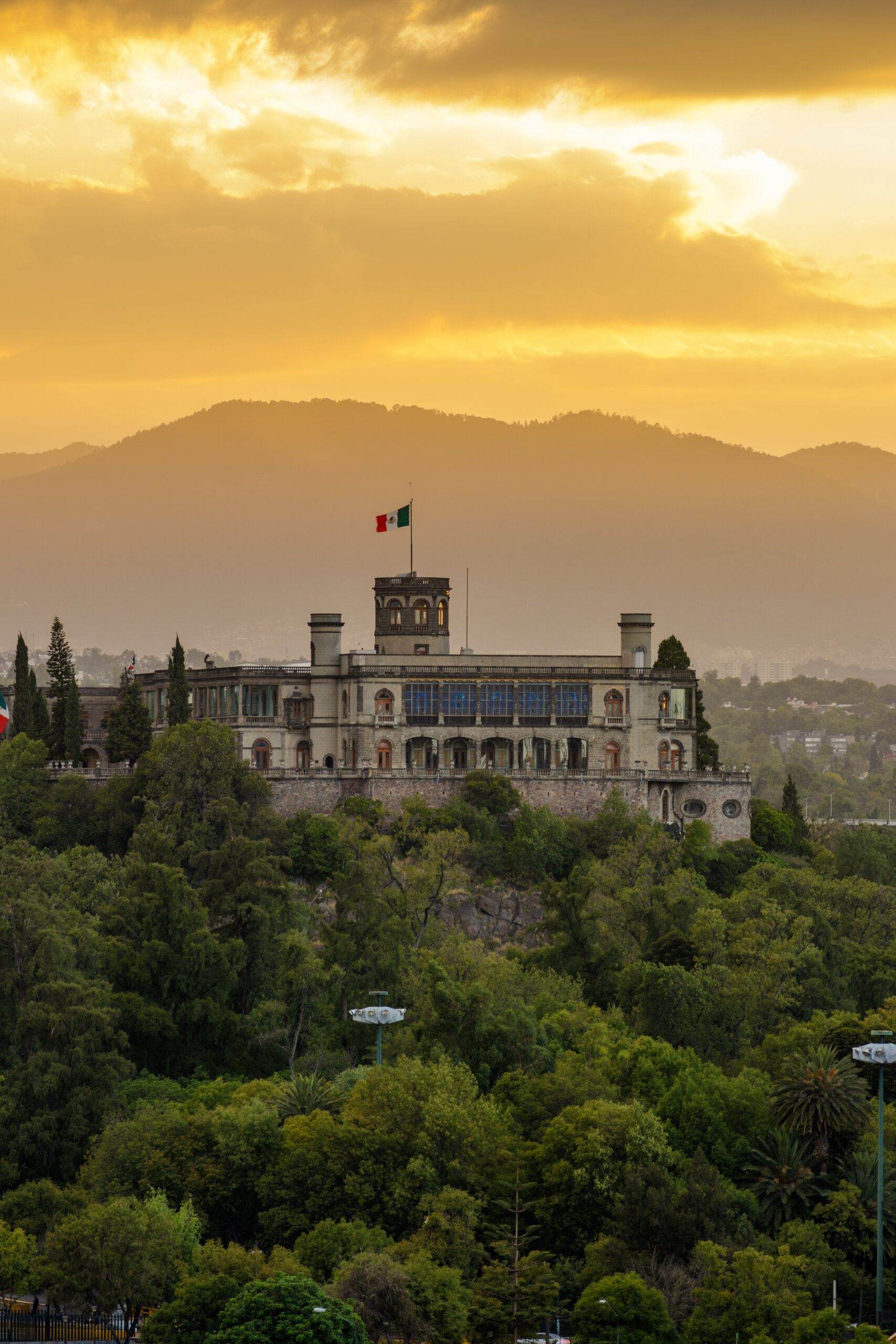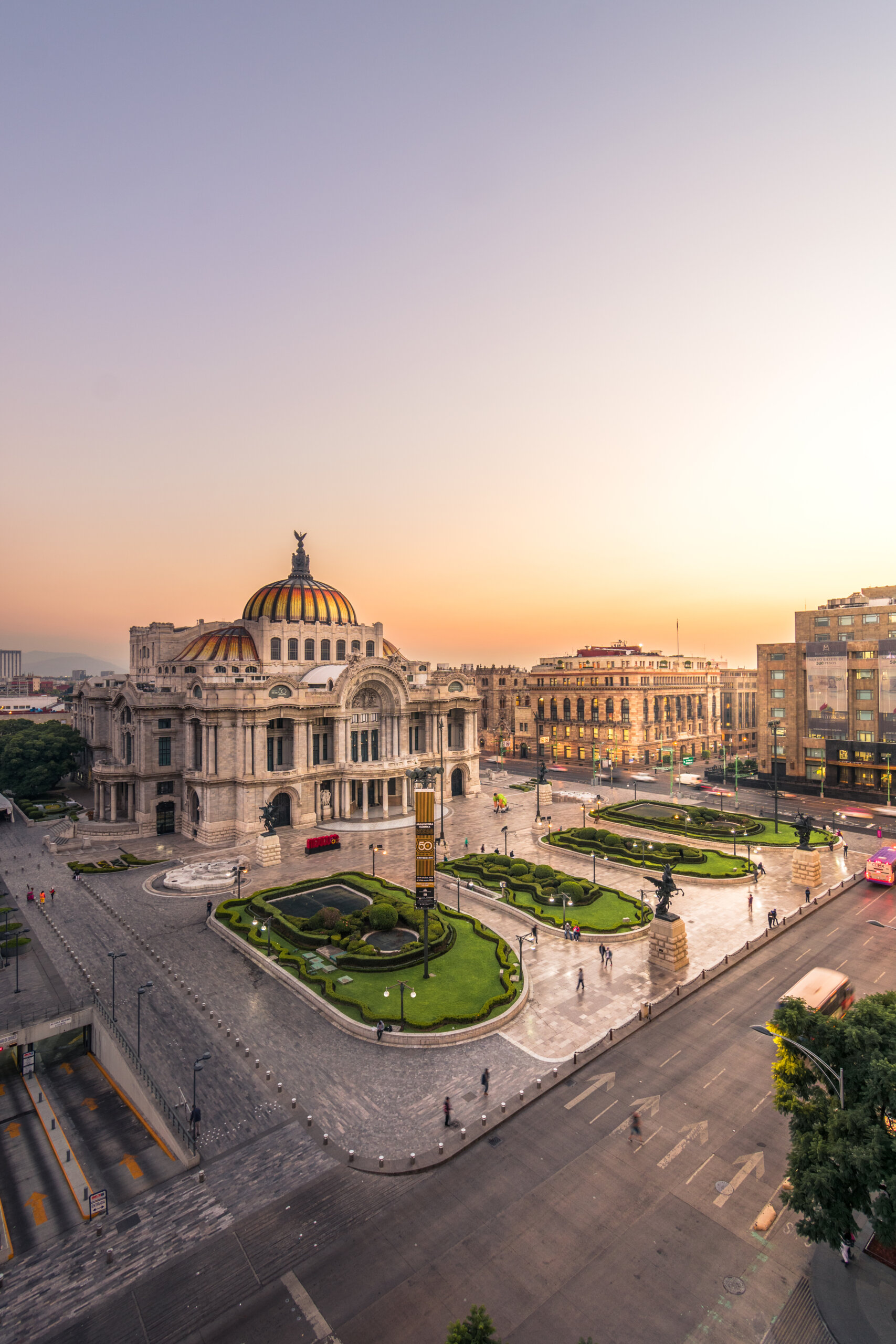DESCRIPTION

Mexico City is a modern and cosmopolitan metropolis, full of traditions and culture.
Its Historic Center is the epicenter of its identity; Through its streets you can find archaeological sites, pre-colonial palaces or contemporary buildings that are very representative of the 20th century.
The Historic downtown of Mexico City, was declared a World Heritage Site by UNESCO in 1987 and it should be noted that the best way to discover it is to walk it; to discover all its colors, aromas, sounds and flavors; there is no better way to get to know it than on foot.
To fall in love with Mexico City down town, the tour must begin in the Zócalo, the largest and most important public square in the entire country, the nerve center of the capital since pre-Hispanic times, when it was still the sacred citadel of the Aztec empire.
Today it is surrounded by emblematic buildings such as the Metropolitan Cathedral, one of the largest religious temples in Latin America; Also on the outskirts of the capital’s Zócalo is the National Palace, a building that has been the seat of governments for almost 500 years, inside you can see various murals made by Diego Rivera, murals that tell the history of Mexico.
Very close to there is the Alameda Central, the oldest public park in the capital. Its surroundings are full of treasures, starting with the Palace of Fine Arts, designed by the Italian architect Adamo Boari, it is one of the most emblematic buildings in the city, home to extraordinary exhibitions, events and artistic activities, as well as exhibiting 12 magnificent works made by the main artists of Mexican muralism; In its main room, the majestic curtain stands out with the image of the Popocatépetl and Iztaccíhuatl volcanoes, designed by Tiffany with more than a million pieces of opalescent glass.
Another obligatory stop is the Plaza de la República, recently remodeled and presented as an oasis of tranquility and rest, whose protagonist is the Monument to the Revolution with a colossal appearance and sublime architectural quality; it integrates a museum and a spectacular lookout, to enjoy incomparable views of the square and the city.
To one side is the Frontón México, an icon of art decó in the city, now a venue for conventions and shows with more than 90 years of existence that presents sporting, cultural and artistic events.
The Roma, Condesa and Juárez neighborhoods have become another important point, since they represent the artistic meeting point, as well as being a gastronomic reference in the city. Among its streets converges a wonderful aesthetic fusion that oscillates between tradition and avant-garde, with an important architectural presence, art deco, art nouveau and neo-colonial that today houses restaurants, bars, design shops and art galleries.
Avenues like Álvaro Obregón and Orizaba in Roma; Amsterdam, Nuevo León and Tamaulipas in La Condesa, concentrate the largest artistic and culinary offer in the area. However, these neighborhoods also have places and corners that will captivate you, many of them intervened with urban art.
The nearby Juárez neighborhood is also a very enjoyable area. Here you will be surprised by the mansions of European architecture and its quiet cobbled streets with cozy cafes and restaurants.
Another couple of must-see areas for all travelers are the Polanco neighborhood and the Bosque de Chapultepec area, two of the most charming spaces in the city.
Polanco is mainly known for its offer of exclusive hotels, haute cuisine restaurants and luxury boutiques; It is an interesting stop to observe a residential area of Californian colonial architecture, built around the seventies and that merges with new design trends. In this area of the city you can visit renowned museums and stroll through quiet parks. It is a cosmopolitan place where art, technology and glamor merge.
Immediately south of Polanco is the Bosque de Chapultepec, which is guarded by the Paseo de la Reforma. Its extension is so large that it is divided into four sections, where you can find natural areas, parks, fountains, monuments, museums and sports spaces. The first section is the most visited, being an area of great cultural wealth, the most important museums and historical monuments in the country are located here. It is also one of the favorite destinations for Mexican families to spend the weekend enjoying its green areas and recreational activities.
During your visit to Mexico City, it is mandatory to visit Paseo de la Reforma, an emblematic avenue built in the 19th century to connect Chapultepec Castle with the historic center. Today, it is a street full of life where imposing skyscrapers converge with offices, shops, restaurants, luxury hotels, museums and historical monuments. Every Sunday morning the Sunday Bike Tour is held, ideal to enjoy the area and live with its inhabitants.
The south of Mexico City is characterized by its charming colonial neighborhoods and towns of pre-Hispanic origin that still preserve their traditions and customs. It is also an area with an enormous presence of green areas and ecological parks, ideal for visiting with the family and discovering a different side of the Mexican capital.
Here is Coyoacán, one of the most beloved places in Mexico City; In addition to housing numerous historical and cultural attractions, it has a pleasant bohemian atmosphere that fascinates everyone.
San Ángel is another of the irresistible areas to visit in the south. Its colorful colonial mansions, exclusive restaurants, design shops and Mexican handicrafts make it a highly enjoyable stop
A little further south is Ciudad Universitaria, whose attraction lies in its enormous cultural and recreational offer, since it has museums, theaters and numerous green areas to enjoy nature; besides being also Cultural Patrimony of the Humanity.
The center of Tlalpan is another southern region of the beautiful CDMX, it has a provincial air that is very accommodating. While Xochimilco, not far from there, with its canals, historic chinampas, and colorful trajineras, offers one of the most folkloric experiences in the city.
Santa Fe is the most prominent neighborhood in the west of the city. It is a business district where some of the national and foreign corporations with the greatest presence in the country are found. It also has luxury residential subdivisions, as well as high-end hotels and restaurants that offer extraordinary national and international cuisine.
The Santa Fe Shopping Center is located in this area, one of the largest in Latin America, as well as other smaller ones such as Garden Santa Fe. In them you will find luxury brand boutiques, as well as a huge entertainment offer for children and adults, such as video game rooms and bowling alleys, even ice rinks and go karts.
La Mexicana Park is the largest lung in Santa Fe. Its extension is 30 hectares with children’s gardens, a skating rink, a bicycle path, an amphitheater, a reflecting pool and many green areas to relax. It is completely pet friendly and has a gastronomic corridor, so you can easily spend several hours here with the whole family.
Without a doubt, visiting Mexico City will result in one of the most pleasant experiences that you can collect as travelers. Mexico City is the city that has it all.


